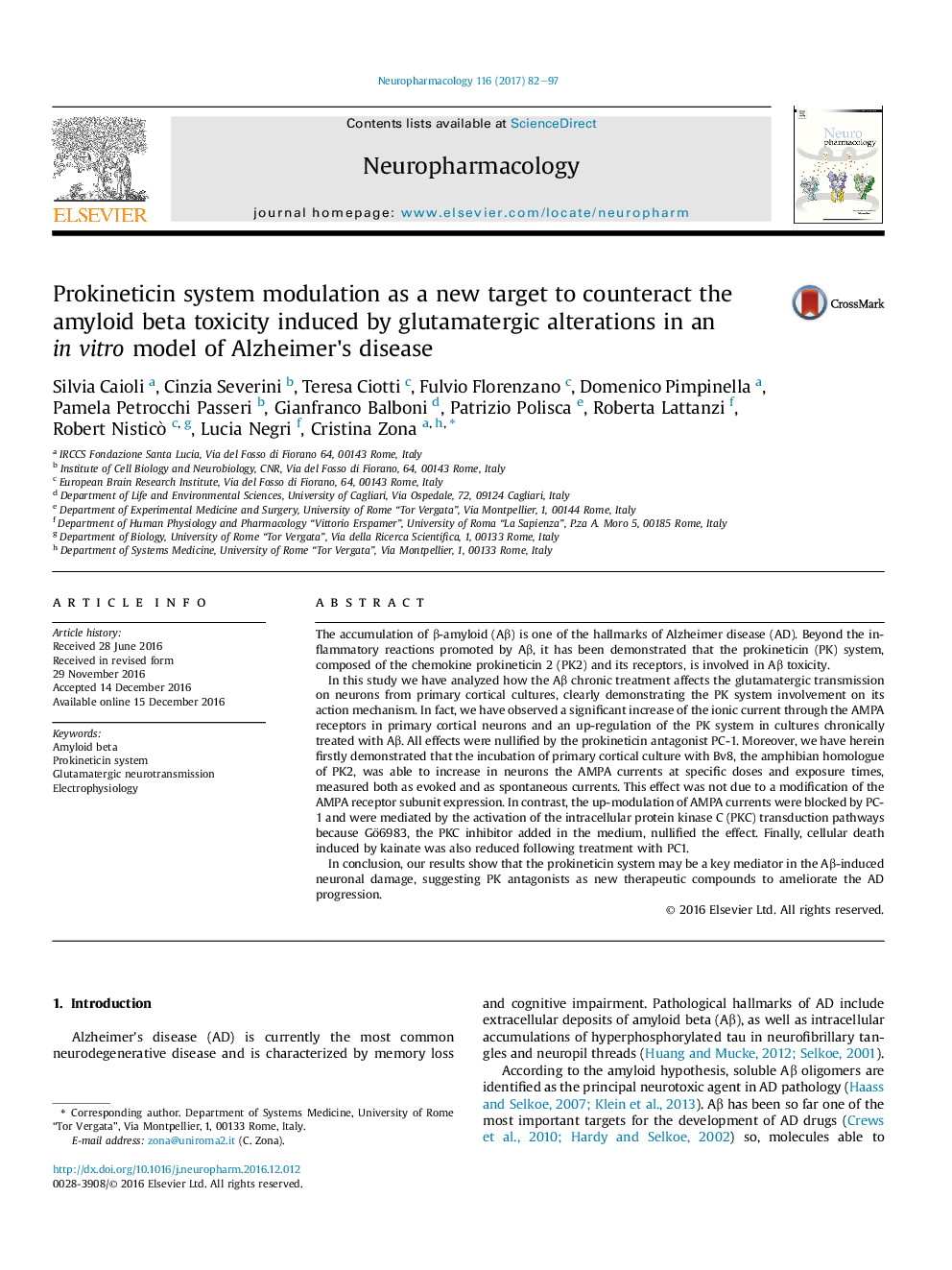| Article ID | Journal | Published Year | Pages | File Type |
|---|---|---|---|---|
| 5548932 | Neuropharmacology | 2017 | 16 Pages |
â¢Aβ up-modulates the ionic current through the AMPA receptors and the PK system.â¢Bv8 affects the glutamatergic transmission.â¢Bv8 effects on the excitatory transmission is blocked by PC-1.â¢Bv8 action mechanism is mediated by the PKC activation.â¢Neuronal death induced by kainate is reduced following treatment with PC1.
The accumulation of β-amyloid (Aβ) is one of the hallmarks of Alzheimer disease (AD). Beyond the inflammatory reactions promoted by Aβ, it has been demonstrated that the prokineticin (PK) system, composed of the chemokine prokineticin 2 (PK2) and its receptors, is involved in Aβ toxicity.In this study we have analyzed how the Aβ chronic treatment affects the glutamatergic transmission on neurons from primary cortical cultures, clearly demonstrating the PK system involvement on its action mechanism. In fact, we have observed a significant increase of the ionic current through the AMPA receptors in primary cortical neurons and an up-regulation of the PK system in cultures chronically treated with Aβ. All effects were nullified by the prokineticin antagonist PC-1. Moreover, we have herein firstly demonstrated that the incubation of primary cortical culture with Bv8, the amphibian homologue of PK2, was able to increase in neurons the AMPA currents at specific doses and exposure times, measured both as evoked and as spontaneous currents. This effect was not due to a modification of the AMPA receptor subunit expression. In contrast, the up-modulation of AMPA currents were blocked by PC-1 and were mediated by the activation of the intracellular protein kinase C (PKC) transduction pathways because Gö6983, the PKC inhibitor added in the medium, nullified the effect. Finally, cellular death induced by kainate was also reduced following treatment with PC1.In conclusion, our results show that the prokineticin system may be a key mediator in the Aβ-induced neuronal damage, suggesting PK antagonists as new therapeutic compounds to ameliorate the AD progression.
